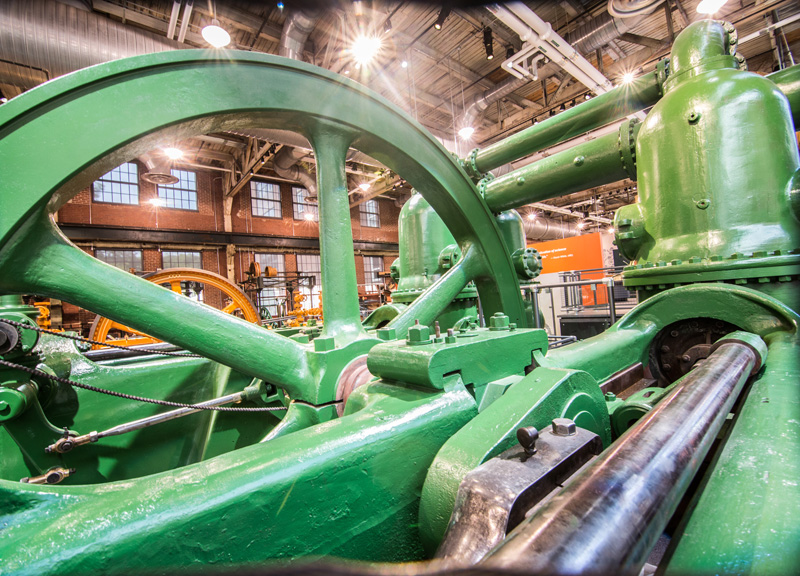
As the year winds down, cultural institutions across the United States prepare special programming to engage communities and honor overlooked legacies. Among them, the National Museum of Industrial History in Philadelphia is stepping forward with a distinctive November and December lineup. These upcoming events for November and December at the National Museum of Industrial History in Philadelphia shine a spotlight on workers who built the backbone of American industry – the experienced equipment mechanic and the hard-to-find manual machinist.
At a time when industries face widening skill gaps and technical trades are harder to staff than ever, the museum’s seasonal programming doubles as both a tribute and a call to awareness.
Honoring Trades That Built America
The manual machinist and equipment mechanic are rarely household names, yet their craft has kept industries moving for generations. Machinists carve precision from raw metal, creating parts that enable engines, tools, and factory systems to run seamlessly. Equipment mechanics, equally indispensable, ensure those machines operate safely and efficiently.
The hard-to-find manual machinist is a figure that speaks to an era of meticulous craftsmanship—before automation replaced hands with algorithms. Likewise, the experienced equipment mechanic embodies a practical expertise that no textbook can replicate. The National Museum of Industrial History recognizes these trades as more than just jobs; they are cornerstones of industrial heritage.

November: Exhibits, Talks, and Living History
November at the museum is set to highlight hands-on demonstrations and public lectures. Attendees can expect to witness retired machinists working live on lathes and milling machines, offering younger generations a rare window into disappearing practices. The museum has also scheduled roundtable talks where former experienced equipment mechanics will share field stories narratives of ingenuity, problem-solving, and resilience in factories and repair shops across the country.
One planned feature is a special “Machinist’s Bench” exhibit, showcasing the tools that defined industrial work before the digital age. From micrometers and calipers to hand-cranked drills, these artifacts tell stories that statistics alone cannot.
December: Celebrations and Community Engagement
In December, the programming shifts toward community celebration. The museum will host holiday events that weave industrial history into festive traditions. A highlight will be the “Winter Trades Celebration”, bringing together descendants of machinists and mechanics for a night of storytelling.
For families, interactive workshops will allow children to try simplified machining and repair tasks—turning a wrench, aligning gears, or fitting metal pieces into place. These activities aim not only to entertain but also to instill respect for the knowledge required of a hard-to-find manual machinist or an experienced equipment mechanic.
Bridging Past and Present
While the museum’s seasonal programming looks back with reverence, it also highlights a pressing modern concern: the growing shortage of skilled tradespeople. Across industries, employers report difficulty filling positions once considered foundational. The manual machinist, once a fixture in every factory, is now classified as “hard-to-find.” Equipment mechanics, too, are increasingly scarce, as fewer workers enter apprenticeship tracks.
By placing these professions at the center of its upcoming events for November and December at the National Museum of Industrial History in Philadelphia, the institution is sparking timely conversations. The museum hopes to inspire young visitors to consider these careers, and to remind the public of their ongoing relevance.
Voices from the Trades
Journalist-style reporting wouldn’t be complete without the voices of those whose lives embody the narrative. In interviews previewing the events, a retired machinist recalled:
- We made parts that couldn’t afford to fail aircraft engines, locomotives, power tools. Every cut had to be perfect. That’s what being a machinist was about: precision and responsibility.
An experienced equipment mechanic, now volunteering with the museum, added:
- Machines break down at the worst times. We were the ones who had to get them back up. It wasn’t glamorous, but without us, production stopped. People forget that.
These voices emphasize why the museum’s winter focus matters. It is not only a celebration of history, but also an act of preservation—ensuring the dignity of these trades isn’t lost to time.
A Journalist’s Perspective
Covering cultural events often centers on the arts music, theater, or fine exhibitions. Yet, the National Museum of Industrial History reminds us that labor itself deserves a spotlight. The trades recognized in this season’s programming may lack celebrity, but they shaped the infrastructure of the nation. By weaving machinists and mechanics into public consciousness, the museum elevates unsung heroes to a rightful place of respect.
These upcoming events for November and December at the National Museum of Industrial History in Philadelphia also reveal the institution’s commitment to community storytelling. Unlike static exhibits, these programs invite participation dialogues with workers, interactive workshops, and intergenerational exchanges. They encourage reflection not only on the past but also on the uncertain future of skilled labor.
Looking Ahead
As winter approaches, the museum’s halls will echo with voices of tradespeople, the whir of demonstration tools, and the laughter of families engaging in interactive programs. The emphasis on the hard-to-find manual machinist and the experienced equipment mechanic is more than thematic it is a message that these professions, though underappreciated, remain vital threads in the fabric of American identity.
For Philadelphians and visitors alike, these events are more than museum outings. They are reminders that history lives not only in grand monuments but also in the precise cuts of a machinist’s tool and the steady hands of a mechanic keeping industry alive.

